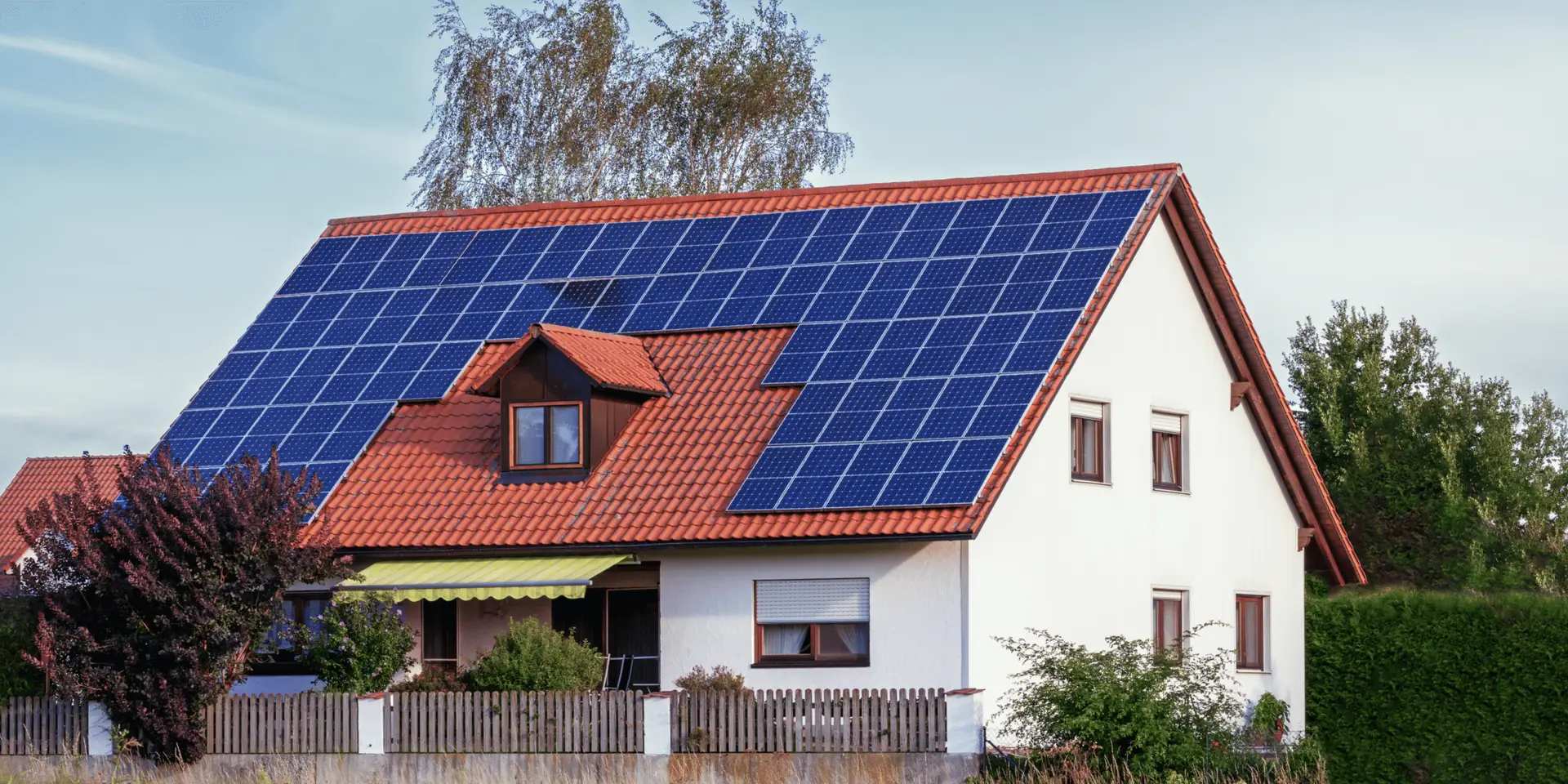With the increasing cost of energy and the increasing concerns on the environment, a growing number of people have decided to use solar energy as an affordable and clean alternative. Nevertheless, there is always the question of whether solar panels are the power solution to the whole house. The answer to this question is yes, and under the right system size, installation, and circumstances, the needs of your entire household can be covered by solar panels.
This article will answer the question of how solar energy works, how many panels you require, the factors that influence the efficiency of your system, and whether going all solar will be the best option for your home.
How Solar Panels Work
It is worthwhile to learn about the working principles of solar panels before we engage in powering a whole house.
Converting Sunlight into Electricity
Solar panels consist of photovoltaic (PV) cells that produce direct current (DC) electricity using the sun. Most home appliances are alternating current (AC), so to help in converting the DC to usable AC power, it is converted with the aid of an inverter.
Powering Your Home
This electricity can then be converted into power which can be used to power your lights, HVAC system, your kitchen appliances, and all your electronics. You can store the excess power generated by your panels in batteries or reintroduce it to the power grid.
Grid-Tied vs. Off-Grid Systems
Grid-tied systems are still attached to the utility system power grid. When your panels fail to generate enough electricity, they draw electricity which is then sent back and charged in credits through net metering.
On-grid systems on the other hand are fully independent. They use battery storage to supply power at night or during cloudy days.
Can Solar Panels Power an Entire House?
Yes, it is possible to power your entire household on solar panels, although a number of factors will dictate how much power will be able to support your energy demands.
Your Energy Consumption
The initial piece of the puzzle is knowing the amount of energy consumed in your home. As per Energy Information Administration (EIA), the average American home was found to consume approximately 886 kilowatt-hours (kWh) of electricity per month, or approximately 10,600 kWh of electricity per year.
This is based on:
- The size of your home
- The population of those living in your home
- The productivity of your appliances
- Your home heating and cooling practice
You can find your exact usage by checking your utility bills for the past year.
Solar System Size
The area of your solar set up should be befitting the energy requirements of your house. A normal solar panel generates 350- 450 watts of energy. On average, to supply the power of an average American house, 20-30 panels should suffice, based on the size of your roof, exposure to sunlight, and power consumption.
For example:
- Assuming that you consume 10,600 kWh every year, and that your panels produce 1500 kW/kW/annually, approximately 7 to 8 kW system would be required.
- This is equivalent to 21-24 panels, depending on the power per panel.
Sunlight and Location
Where you are is a big indicator. Sunny states, such as California, Arizona, Texas, and Florida, will have solar energy yielding more than homes in cloudy states, such as the Pacific Northwest. Where your roof is located and how many trees or other buildings that are near your roof providing shade will also factor into the efficiency.
Battery Storage: Powering Your Home Day and Night
This is one of the challenges of solar energy as it means that power is produced only when the sun shines. It is there that solar batteries come in.
How Solar Batteries Work
Batteries, such as the Tesla Powerwall or LG Chem RESU, save the surplus sun energy produced in the daytime in order to use the energy at night or when there is a cloud cover.
Grid Backup vs. Off-Grid
When you are on the grid, you can have this as a backup in the event that your panels are not generating enough. But when you are not on the grid, you will have to make sure that you have enough battery capacity to sustain more than a few days of power consumption particularly during winter or stormy seasons.
Typical Battery Needs
One Powerwall is capable of holding approximately 13.5 kWh of energy. The consumption and lifestyle may require the family to have 2-3 batteries in order to have complete coverage.
How Much Does a Whole-Home Solar System Cost?

Solar panels have become more affordable than ever before due to the significant reduction in cost in the past 10 years.
Average Cost
The residential solar system cost will have an average price between $2.50 and $3.50 per watt through the year 2025.
That means:
- A 7-kw system and other incentives are estimated at around $17,500-$24,500.
- A net cost of between $12,000 and $17,000 may be a better estimate after the 30 percent federal solar tax credit.
Additional Costs
You might also need to estimate:
Battery storage: $7,000-$12,000 per battery
Replacement of inverter: Every 10-15 years
Cleaning and maintenance: Minimal, however, there are checks occasionally that can keep performance up.
Long-Term Savings
The initial price might be expensive, but depending on local utility charges and system size, solar panels can save homeowners between $20,000 and $60,000 on their electricity expenses during the course of 25 years.
Financial Incentives for Going Solar
Many states are providing incentives to ensure solar energy becomes affordable in the U.S.
Federal Solar Investment Tax Credit (ITC)
The federal solar tax credit of 30 percent gives homeowners an opportunity to deduct 30 percent of their solar system installation cost as tax deductions on their federal taxes. This credit is provided till at least 2032.
State and Local Incentives
Additional rebates, tax credits, or performance-based incentives are provided in many states, such as California, New York, and Massachusetts. There are also some utilities that provide net metering in which you can also have bill credits by sending excess power back to the grid.
Pros and Cons of Powering Your Home with Solar Panels
Pros
Reduce Electricity Bills: With solar, it is possible to significantly reduce your monthly electrical bills.
Energy Independence: You can lessen dependence on utility companies and changing rate spikes.
Environment: Solar is green, renewable, and more likely to minimize your carbon footprint.
Value Addition to Homes: Homes that have solar systems usually sell quicker and at a premium.
Minimal Maintenance: Most panel systems have 25-year warranties and entail minimal maintenance.
Cons:
Startup Fees: There is an upfront investment cost that could be considered high, even with tax credits.
Weather Dependence: Energy production is dependent on the amount of sunlight in your area.
Space Requirement: Not every roof has sufficient space for panels.
Battery Costs: The full energy independence necessitates battery costs, which increases the overall costs.
Is Going Fully Solar Right for You?
Whether solar panels can power your entire house depends on your unique situation.
Ask yourself:
- Is there adequate sun exposure on your house’s roof?
- How much energy do you use, on average, per month?
- Can you make a long-term investment to save money?
- Are there good solar incentives in your state?
If you answered most of these to the affirmative, then it may be great to invest in going solar for yourself and the environment.


